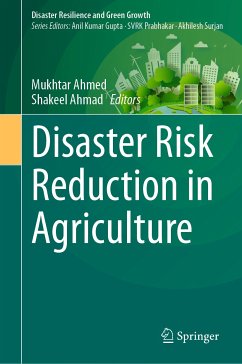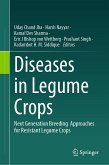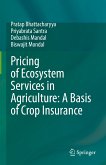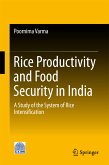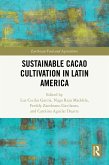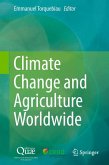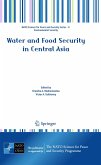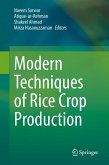This book is related to disaster risk reduction in agriculture particularly under changing climate. Climate change refers to significant, long-term changes in the global climate. There is unequivocal evidence that Earth is warming at an unprecedented rate. Human activity is the principal cause. The planets average surface temperature has risen to about 1oC since the late 19th century and most of the warming occurred in the past 40 years. The years 2016 and 2020 are tied for the warmest year on the record. Similarly, other evidence of rapid climate change includes warming of oceans, shrinking of ice sheets, retreating glaciers, decreasing snow cover, rising of sea level, declining artic sea ice, increased frequency of extreme events, ocean acidification and loss of biodiversity. Hence, climate change impacts, both extreme weather and slow-onset events, have impacted several sectors of the national economies and activities, in particular agriculture and food production, augmented by other challenges be it geopolitical, cost of finance or supply chain related, and in a time of increased food insecurity. Without CO2 fertilization, effective adaptation, and genetic improvement, each degree-Celsius increase in global mean temperature would, on average, reduce global yields of wheat by 6.0%, rice by 3.2%, maize by 7.4%, and soybean by 3.1%. Hence this book is useful as a study material to teach in the field of agriculture and climate change. The book is useful for instructors and postgraduate as well as undergraduate students involved in the study of climate change. The book also provide guidance to multiple stakeholders to design mitigation and adaptation efforts to climate change and ensure food security in the developing world.
Dieser Download kann aus rechtlichen Gründen nur mit Rechnungsadresse in A, B, BG, CY, CZ, D, DK, EW, E, FIN, F, GR, HR, H, IRL, I, LT, L, LR, M, NL, PL, P, R, S, SLO, SK ausgeliefert werden.

